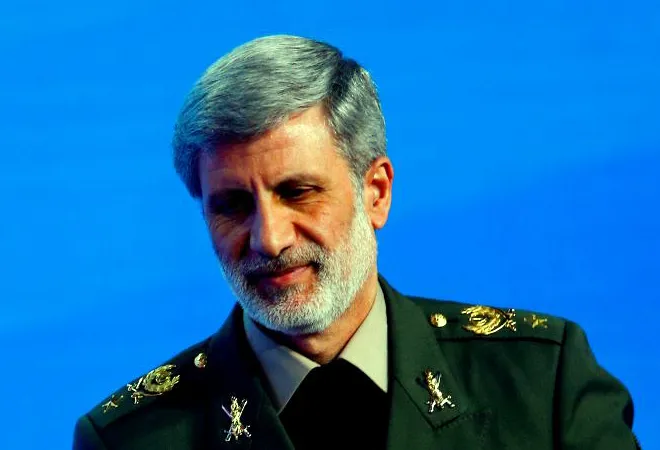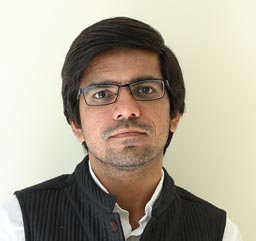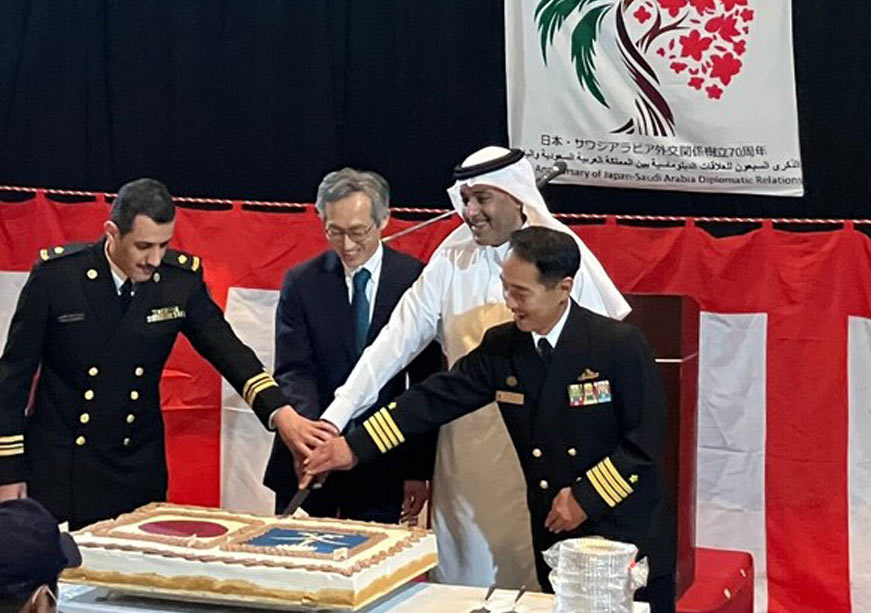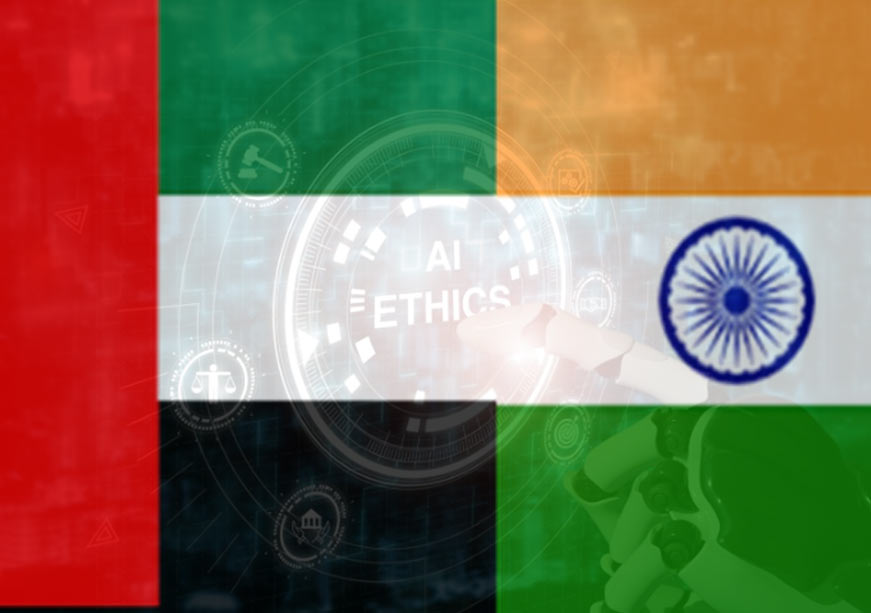Iran may become an important point of contact — diplomatically — in the near future, and the reason behind this will not be energy security for India or the geopolitical wrangling in West Asia, but an increasingly challenging situation in Afghanistan.
Iran’s Defence Minister, Brigadier General Amir Hatami, became the first defence minister of the country to visit India in 40 years, opening a new and significant avenue of cooperation between Tehran and New Delhi. More than just the bilateral, Hatami’s visit on the sidelines of the AeroIndia 2021 event in Bengaluru to take part in the first conclave for the defence ministers of the Indian Ocean Region (IOR) brings Tehran back into New Delhi’s balancing act in West Asia (Middle East), as it continues to work towards maintaining relations between the Gulf, Israel and Iran. Hatami was invited to attend the event during Indian Defence Minister Rajnath Singh’s visit to Iran in September 2020.
The Iranian defence minister’s visit comes at an interesting time, not just with regard to West Asia’s geopolitics, but considering the recent Improvised Explosive Device (IED) explosion in New Delhi near the Israeli embassy, which Israel’s Ambassador to India, Ron Malka, highlighted as a terror attack against the mission. Initial reports pointed towards the possibility of an Iranian hand, as a letter recovered at the bombing site names an individual or group who identify themselves as “Sarallah India Hezbollah” as those behind the attack. This bombing brought to the forefront a previously similar act, when in 2012 an Israeli diplomat’s vehicle was attacked around the same region of New Delhi by motorcycle-borne assailants using a magnetic sticky explosive to target the car. Iran was once again at the forefront of the blame game.
This bombing brought to the forefront a previously similar act, when in 2012 an Israeli diplomat’s vehicle was attacked around the same region of New Delhi by motorcycle-borne assailants using a magnetic sticky explosive to target the car.
The complexities explained above and spillover of West Asia’s regional feuds, now largely between Israel and the Gulf on one side, thanks to the Abraham Accords; and Iran on the other, are the geopolitical realities New Delhi has to balance as it attempts to keep good and insulated relations with the Gulf capitals, Israel and Iran all at the same time. The 2019 naval exercise between India, Russia and Iran in the Indian Ocean and the Gulf of Oman is a prime example of this balancing act in play as Moscow’s increasing role in West Asia is also being factored in. However, India’s relations with the Gulf capitals have been quickly outpacing those with Tehran, and arguably, even Jerusalem. From security and defence to economic cooperation, investment and people-to-people contact, Riyadh and Abu Dhabi hold significant capacity in the Indian capital today.
On the opposite side, India-Iran ties have arguably been moving at a snail’s pace, both from an economic and strategic points of view. The much discussed and quite optimistically coveted Chabahar Port project remains New Delhi’s major strategic play in Iran while other facets of the bilateral have been nothing to drive home about. These choices have made the traditional Indian balancing act in the region a little difficult, as relations with Tehran languish behind in the cue. Tensions have also surfaced more than often over the past years, from the detention of Indian oil tanker MT Desh Shanti carrying oil from Iraq to India in 2013 at the height of US sanctions against Iran, to the more recent reports of New Delhi being dropped as a partner in the construction of the Chabahar-Zahedan rail line.
India-Iran ties have arguably been moving at a snail’s pace, both from an economic and strategic points of view.
However, Iran may after all become an important point of contact diplomatically in the near future, and the reason behind this will not be energy security for India or the geopolitical wrangling in West Asia, but an increasingly challenging situation in Afghanistan. The Taliban recently visited Tehran to hold consultations with the Iranian establishment, spending four days in the country to shore up support for their space in the intra-Afghan dialogue taking place in Doha. Iran is often an outlier in the Afghan debate with its tumultuous relations with the US taking precedence, however, both Iran and the Taliban share a striking common goal, that of an immediate exit of US forces from the country and the region. This stance is, of course, despite the fact that Iran supported the US effort against the Taliban in the immediate aftermath of the 9/11 terror attacks.
The neighbourhood dynamic for the Taliban is not necessarily the easiest one to manage. While the Taliban may display a sense of autonomy with regard to its policies on how to approach neighbouring states, using its Doha office almost like an official diplomatic outpost, Pakistan’s strong patronage of the Taliban may ultimately prevail as the strongest rudder for the group’s policies despite efforts by its leadership to mitigate the same. To put this in perspective, recent reports of Iran conducting a ‘surgical strike’ across the border into Pakistan to rescue Revolutionary Guard Corps (IRGC) personnel who were kidnapped in 2018 by a group identifying as Jaish-ul-Adl operating in the Sistan and Baluchistan Province bordering Iran and Pakistan, highlights the often challenging relationship between Islamabad and Tehran.
The neighbourhood dynamic for the Taliban is not necessarily the easiest one to manage.
Meanwhile, Tehran has also used Afghanistan as a resource pitstop, criticised for using hundreds of Afghan Shia refugees joining the Iran-backed Fitimiyoun Brigade to fight in Syria in aid of Iran’s campaign to keep President Bashar al-Assad in power. However, many of these Shi’ite fighters have finished campaigns and returned to Afghanistan, giving Tehran a direct play within the complex Afghan jihad theater to use the Brigade as a possible pressure point, specifically against the rapidly increasing power of the Taliban and by extension, Pakistan. It also remains to be seen what the Taliban’s reaction to the Fitimiyoun will be if the former does gain significant or absolute power over Kabul while maintaining the common goal of an eventual full exit of US and other foreign militaries. Scholar Kanishka Nawabi, while reminding us that Iran’s use of Afghan Shia proxies dates back to the era of Shah of Iran Mohammad Reza Pahlavi, many of these Afghan Shi’ite fighters today are in fact getting officially integrated into Syrian society by obtaining Syrian passports and settling down in Iran’s increasingly strong sphere of influence in the region. Similarly, Iranian proxies in Afghanistan are allocated 50-60 visas per month, which are then re-sold in the Afghan black market at a significant mark up, including to local Afghan politicians. Nawabi’s branding of the Fitamiyoun as ‘Iran’s good Taliban’ offers a perspective of where Tehran may see the Fitamiyoun fitting in. All of this is also a reminder that Afghan jihadist groups are only part of the complexities, with foreign groups also forming a significant section of the problem. The outliers, as always, are the everyday Afghan people.
These regional fissures will be critical for New Delhi to understand and work with if US President Joe Biden’s administration commits to a full US military withdrawal by May. The Taliban has already warned that a US failure to do so and not abide by the US-Taliban agreement signed last year in Doha will lead to an escalation in violence, which could include NATO targets. In this eventuality, New Delhi’s outreach to Tehran with regard to the Afghan theater and the Taliban alike could become an important play in its deck of cards. This, of course, will not be easy to manage either, with Iran’s survivalist state mindset firmly entrenched into how the country governs its affairs, India will arguably be pushed by the Iranians to commit further to the Iranian economy, global and regional views and hedge and re-balance in some capacity from its close relations with Riyadh and Jerusalem. The recent positive developments with the chimera of India-Iran relations that is the Chabahar Port project, adds a small yet much needed spring to the bilateral ties for the time to come.
New Delhi’s outreach to Tehran with regard to the Afghan theater and the Taliban alike could become an important play in its deck of cards.
Hatami called the invitation for Tehran to attend the Indian Ocean Region defence ministers’ meet as a “turning point” for India and Iran, calling the bilateral standing at a “good level.” The apparent absence of senior attendees from the likes of the UAE, which is also a member of the Indian Ocean Rim Association (IORA), indicates a more concentrated and designed effort by New Delhi to host Iran at this particular meet without other geopolitical complexities coming into play.
Beyond the Indian Ocean Region and India’s balancing act in West Asia, Afghanistan is placed to become a significant point of contact for New Delhi and Tehran. However, while for India, managing anything relating to Afghanistan with Iran is not going to be an easy ask, it could become a significant geopolitical play to commit towards considering the limited options New Delhi has as the Afghan theater evolves further towards a chaotic and messy affair in the months (and perhaps years) to come.












